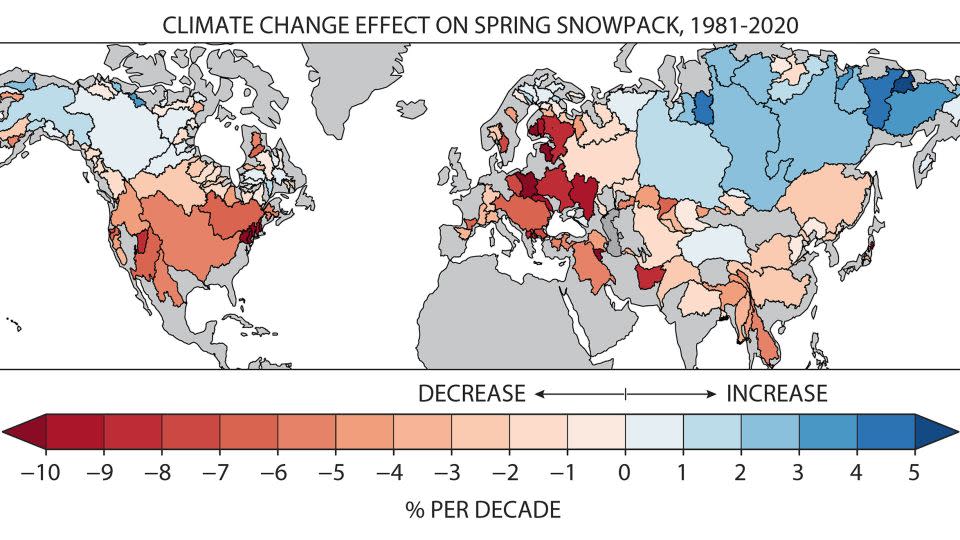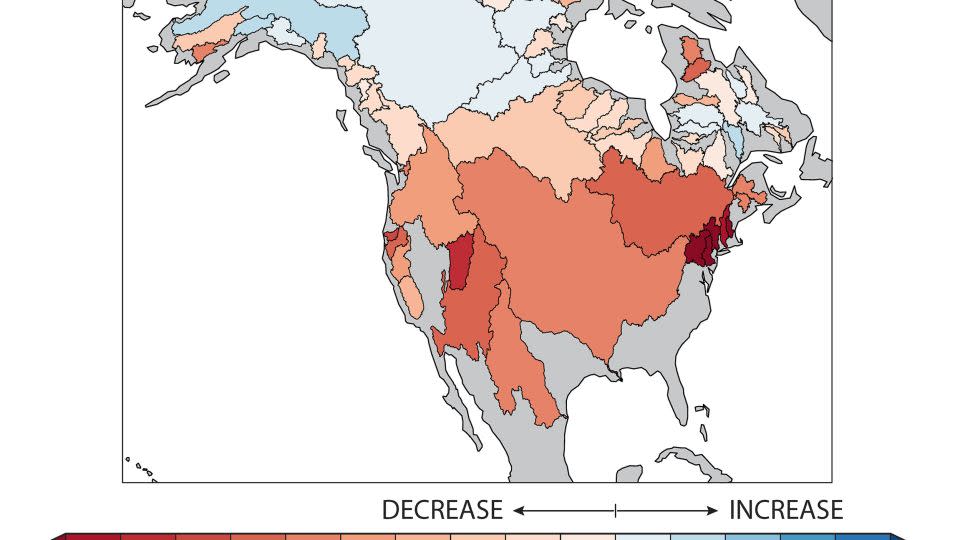Large swaths of the United States have been hit by powerful storms, including blizzards that have blanketed parts of the Midwest and Northeast. But something is amiss: many states accustomed to white winters are now getting more rain than snow.
A new study published Wednesday shows that the human-caused climate crisis has reduced snowfall in most of the Northern Hemisphere over the past 40 years, threatening vital water resources for millions of people.
It might seem logical that a warmer world would make snow less welcome, but the relationship between snow and climate change is complex, and scientists have struggled for years to make a clear link between the two.
Part of the problem is that snowfall is difficult to measure accurately, and scientific data from ground observations, satellites and climate models have given conflicting signals about the role of climate change in shrinking snowpacks. Some areas in our warmer world had even more snow.

But Wednesday’s study, published by researchers at Dartmouth College in the journal Nature, paints the big picture – there has been significant snowfall in the global north due to climate change since the 1980s. Declines of between 10% and 20% per decade associated with global warming have occurred in areas of the Southwestern and Northeastern United States, as well as Central and Eastern Europe.
“It’s very clear that climate change is having a negative impact on snow and water,” said Alexander Gottlieb, the study’s lead author and a doctoral student at Dartmouth College. “And each additional degree of warming will deplete your snow water resources more and more.”
Less snow means less water supply
The researchers found that snowpack loss increases when average winter temperatures at a location rise above 8 degrees Celsius (about 17 degrees Fahrenheit), a point they refer to as the “snow cliff.” After that, the snow loss increases with even moderate increases in temperature.
That’s a huge problem for communities that rely on snow for water. Many of the world’s water supplies are already threatened by climate change due to increasingly frequent and severe droughts and heat waves. As the planet continues to warm, the study found that many highly populated areas that rely on snow will experience an increased loss of water availability in the coming decades.
“When you have a regime transitioning to one that doesn’t have more snow in the winter, but instead has more rain, you have a situation where you can have reservoirs half full, or less,” Justin Mankin , the Foundation’s senior author. study and associate professor of geography at Dartmouth, CNN said. “Then the question becomes ‘well, are we going to have a rain spring?'” to compensate for water withdrawals from places downstream.
They also looked at river basins to measure how much snow water capacity had fallen. The study found that snowpack was declining across 82 of 169 major Northern Hemisphere basins, including the Colorado in the US and the Danube in Europe, with 31 showing the fingerprint of climate change caused by the a confident person.
“Most of the world’s people live in watersheds that are on this stretch where they will fall off a cliff with accelerating snow loss, causing each degree of warming to lose more and more snowpack,” said Mankin.
To reach their conclusions, the researchers specifically analyzed snowpack declines in March between 1981 and 2020, because it provides “a convenient summary of all winter weather,” Mankin said. He noted that the amount of snow on the ground in March shows what winter conditions were like that season before spring melted the reservoir that trickles down stream to provide water for families and the agriculture.
“The March snowpack is symbolic of everything that happened during the winter, and we test the sensitivity of that measure,” Mankin said.


Previous years with less snowpack in the western US have already provided a preview of what future winters and springs may look like in many parts of the Northern Hemisphere, from unprecedented water shortages to raging wildfires worse, Mankin said.
Snow also helps prevent wildfires or can reduce their intensity. Unlike rain, which can run off quickly, snow melts slowly over time and can slowly and continuously release water into the soil, making it less likely to burn and adding less fuel available to spread fires.
Less snowpack also has a significant toll on places that rely on winter recreational activities, such as skiing and snowboarding, as key economic drivers. Many ski resorts in the Northern Hemisphere are already facing such challenges, with many now relying on snow cannons to ensure there is enough snow to keep businesses operating. Some places are approaching temperature thresholds that will make even machine-made snow unviable.
Mona Hemmati, a postdoctoral research scientist at the Columbia School of Climate, who was not involved in the study, said the research provided “very strong evidence” of how human-caused climate change is affecting snow patterns.
“What makes this study groundbreaking is its approach to isolating the effects of anthropogenic climate change from natural climate variability,” Hemmati told CNN. “This study is a critical reminder of the growing impacts of climate change and the need for immediate and concerted action to address this global challenge.”
For more CNN news and newsletters create an account at CNN.com